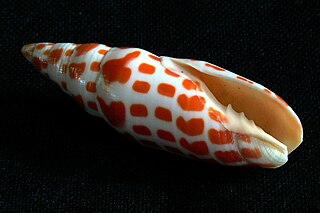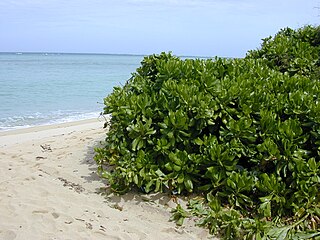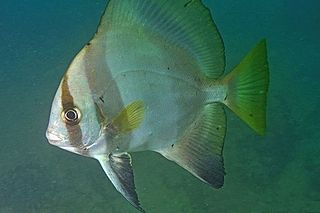
The macaques constitute a genus (Macaca) of Old World monkeys of the subfamily Cercopithecinae. The 23 species of macaques are distributed throughout Asia, North Africa and Gibraltar. Macaques are principally frugivorous, although their diet also includes seeds, leaves, flowers, and tree bark, and some, such as the crab-eating macaque, subsist on a diet of invertebrates and occasionally small vertebrates. Macaques are found in a variety of habitats throughout the Asian continent, and are extremely adaptable. All macaque social groups are arranged around dominant, matriarchal females. They also have learned to live with humans, and have become an invasive species in some human inhabited landscapes, such as the island of Mauritius and Silver Springs State Park in Florida. Macaques can be a threat to conservation, along with a threat to human wellbeing through carrying transmittable and fatal diseases. Currently, macaques as an invasive species are handled with several control methods.

Pinus radiata, family Pinaceae, the Monterey pine, insignis pine or radiata pine, is a species of pine native to the Central Coast of California and Mexico.

The Indo-Pacific, sometimes known as the Indo-West Pacific or Indo-Pacific Asia, is a biogeographic region of Earth's seas, comprising the tropical waters of the Indian Ocean, the western and central Pacific Ocean, and the seas connecting the two in the general area of Indonesia. It does not include the temperate and polar regions of the Indian and Pacific oceans, nor the Tropical Eastern Pacific, along the Pacific coast of the Americas, which is also a distinct marine realm.

The rhesus macaque is one of the best-known species of Old World monkeys. It is listed as Least Concern in the IUCN Red List of Threatened Species in view of its wide distribution, presumed large population, and its tolerance of a broad range of habitats. Native to South, Central, and Southeast Asia, rhesus macaque have the widest geographic ranges of any nonhuman primate, occupying a great diversity of altitudes and a great variety of habitats, from grasslands to arid and forested areas, but also close to human settlements.

India has some of the world's most biodiverse regions. The political boundaries of India encompass a wide range of ecozones—desert, high mountains, highlands, tropical and temperate forests, swamplands, plains, grasslands, areas surrounding rivers, as well as island archipelago. It hosts
4 biodiversity hotspots:the Himalayas, the Western Ghats, the Indo-Burma region and the Sundaland. These hotspots have numerous endemic species.

The clearfin lionfish, also called the tailbar lionfish, radiata lionfish, fireworks fish or radial firefish, is a carnivorous, ray-finned fish with venomous spines that lives in the Indian and western Pacific Oceans. This is the only lionfish species which has spines without any markings. It can also be recognized by the pair of horizontal white stripes on its caudal peduncle.

The regal angelfish or royal angelfish, is a species of marine angelfish of the family Pomacanthidae, and the monotypic genus Pygoplites. It is found in tropical Indo-Pacific oceans. It can grow as long as 25 cm.

Beilschmiedia is a genus of trees and shrubs in family Lauraceae. Most of its species grow in tropical climates, but a few of them are native to temperate regions, and they are widespread in tropical Asia, Africa, Madagascar, Australia, New Zealand, North America, Central America, the Caribbean, and South America. The best-known species to gardeners in temperate areas are B. berteroana and B. miersii because of their frost tolerance. Seeds of B. bancroftii were used as a source of food by Australian Aborigines. Timbers of some species are very valuable.

The Paleotropical Kingdom (Paleotropis) is a floristic kingdom comprising tropical areas of Africa, Asia and Oceania, as proposed by Ronald Good and Armen Takhtajan. Part of its flora, inherited from the ancient supercontinent of Gondwana or exchanged later, is shared with the Neotropical Kingdom, comprising tropical areas of Central and South America. Moreover, the Paleotropical flora influenced the tropical flora of the Australian Kingdom. The Paleotropical Kingdom is subdivided into five floristic subkingdoms according to Takhtajan and about 13 floristic regions. In this article the floristic subkingdoms and regions are given as delineated by Takhtajan.
The Western Indo-Pacific is a biogeographic region of the Earth's seas, comprising the tropical waters of the eastern and central Indian Ocean. It is part of the larger Indo-Pacific, which includes the tropical Indian Ocean, the western and central Pacific Ocean, and the seas connecting the two in the general area of Indonesia. The Western Indo-Pacific may be classified as a marine realm, one of the great biogeographic divisions of the world's ocean basins, or as a subrealm of the Indo-Pacific.

Mitra mitra, common name the episcopal miter, is a species of large predatory sea snail, a marine gastropod mollusk in the family Mitridae, the miters.

Chicoreus ramosus, common name the ramose murex or branched murex, is a species of predatory sea snail, a marine gastropod mollusk in the family Muricidae, the murex snails. It is considered an economically important species in the Indo-West Pacific, especially in India.
Smaragdia souverbiana is a species of sea snail, a marine gastropod mollusk in the family Neritidae.
Pinctada radiata, commonly known as the Atlantic pearl-oyster or the Gulf pearl oyster is a species of pearl oyster distributed throughout the Indo-Pacific. Its range extends as far north as Japan and as far south as the Australian state of Victoria.

Scaevola taccada, also known as beach cabbage, sea lettuce, beach naupaka, naupaka kahakai (Hawaiian), magoo (Divehi), merambong (Malay), bapaceda or papatjeda, ngahu (Tongan) is a flowering plant in the family Goodeniaceae found in coastal locations in the tropical areas of the Indo-Pacific. It is a common beach shrub throughout the Arabian Sea, the tropical Indian Ocean and the tropical Islands of the Pacific.

Rhizophora mucronata is a species of mangrove found on coasts and river banks in East Africa and the Indo-Pacific region.

Acropora aculeus is a species of acroporid corals found throughout the Indian Ocean, the central Indo-Pacific, Australia, southeast Asia, Japan and the East China Sea. It is also present in the western Pacific Ocean. It is an uncommon species and is particularly prone to coral bleaching, disease, and crown-of-thorns starfish predation; it is also harvested for use in aquaria, and the International Union for Conservation of Nature has assessed it as being a "vulnerable species". Habitat loss is a big concern.

The humpback batfish, is a species of batfish in the family Ephippidae. They are found in coral reefs around the Indo-Pacific region. Adults can grow up to 65 centimetres (26 in) at maximum.




















